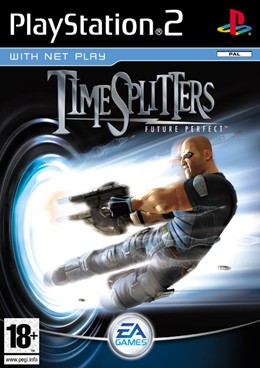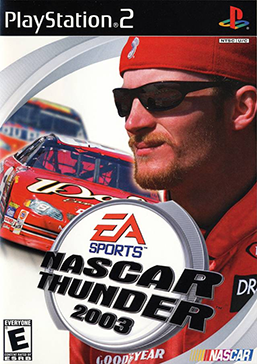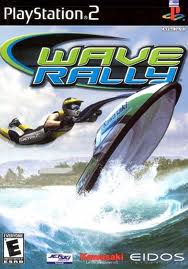
Deus Ex is a 2000 action role-playing game developed by Ion Storm and published by Eidos Interactive. Set in a cyberpunk-themed dystopian world in the year 2052, the game follows JC Denton, an agent of the fictional agency United Nations Anti-Terrorist Coalition (UNATCO), who is given superhuman abilities by nanotechnology, as he sets out to combat hostile forces in a world ravaged by inequality and a deadly plague. His missions entangle him in a conspiracy that brings him into conflict with the Triads, Majestic 12, and the Illuminati.

Quake III Arena is a 1999 multiplayer-focused first-person shooter developed by id Software. The third installment of the Quake series, Arena differs from previous games by excluding a story-based single-player mode and focusing primarily on multiplayer gameplay. The single-player mode is played against computer-controlled bots. It features music composed by Sonic Mayhem and Front Line Assembly founder Bill Leeb.

Unreal Tournament is a first-person arena shooter video game developed by Epic Games and Digital Extremes. The second installment in the Unreal series, it was first published by GT Interactive in 1999 for Windows, and later released on the PlayStation 2 and Dreamcast by Infogrames in 2000 and 2001, respectively. Players compete in a series of matches of various types, with the general aim of out-killing opponents. The PC and Dreamcast versions support multiplayer online or over a local area network. Free expansion packs were released, some of which were bundled with a 2000 re-release: Unreal Tournament: Game of the Year Edition.

James Bond 007: Nightfire is a 2002 first-person shooter video game published by Electronic Arts for the GameCube, PlayStation 2, Xbox and Microsoft Windows, with additional versions released for the Game Boy Advance in 2003, and the Mac OS X in 2004. The computer versions feature modifications to the storyline, different missions and the removal of driving sections used in home console versions.

TimeSplitters 2 is a first-person shooter video game, developed by Free Radical Design, published by Eidos Interactive, and released in 2002 for PlayStation 2, Xbox and GameCube. The game's story focuses on the efforts of a space marine who seeks to recover powerful time crystals from a race of alien mutants called TimeSplitters, which leads them to taking on the form of an individual dealing with their own problems across different time periods between the 19th and 25th century. The developers focused on expanding the story element following 2000's TimeSplitters, and features influences from various film genres, including Horror, Action and Science Fiction.

TimeSplitters: Future Perfect is a 2005 first-person shooter video game developed by Free Radical Design and published by Electronic Arts for the GameCube, PlayStation 2 and Xbox video game consoles.

Freedom Fighters is a 2003 third-person shooter video game for the PlayStation 2, GameCube, Xbox, and Microsoft Windows. It was developed by IO Interactive and published by Electronic Arts.

TimeSplitters is a series of first-person shooter video games developed by Free Radical Design. The games are often considered spiritual successors to the Nintendo 64 titles GoldenEye 007 (1997) and Perfect Dark (2000), due to overlapping elements in gameplay, design, and development team. Each game features a time travelling element in which players battle across a diverse number of locations and periods in history.

Project: Snowblind is a first-person shooter video game developed by Crystal Dynamics and published by Eidos Interactive for PlayStation 2, Xbox and Microsoft Windows. The game follows soldier Nathan Frost, who is enhanced with nanotechnology following injuries on a mission and sent against a military regime known as the Republic. Players control Frost through a series of linear levels, using enhancements both in combat and to manipulate security devices such as cameras. The online multiplayer allows up to sixteen players to take part in modes ranging from team-based to solo battles.

SSX 3 is a snowboarding video game developed by EA Canada and published by Electronic Arts under the EA Sports BIG label. The game was originally released on October 21, 2003, for the PlayStation 2, Xbox, and GameCube. It was later ported to the Game Boy Advance by Visual Impact on November 11, 2003, and to the Gizmondo by Exient Entertainment on August 31, 2005, as a launch title. It is the third installment in the SSX series.

Burnout 3: Takedown is a 2004 racing video game developed by Criterion Games and published by Electronic Arts. It is the third instalment in the Burnout series, which is characterised by fast-paced arcade racing. A staple of the series is the use of boost, earned through risky driving, to rapidly increase a car's speed. The central mechanic introduced in Burnout 3 is Takedowns, which allow players to slam their opponents until they crash. Takedowns work in conjunction with the boost system by filling up and extending the boost meter. Aside from standard circuit races, the game features modes focused on performing Takedowns on rival vehicles and causing monetary damage at a junction occupied with traffic. Each game variant is featured in a single-player campaign mode called World Tour, which serves as the primary method for unlocking new and faster cars. The game supports both online and split-screen multiplayer.

Lego Star Wars: The Video Game is a 2005 Lego-themed action-adventure video game based on the Lego Star Wars line of construction toys, and the first installment in the Lego video game franchise developed by Traveller's Tales, which would develop all future Lego titles from that point on. It was first released on 29 March 2005, and is a video game adaptation of the Star Wars prequel trilogy: The Phantom Menace, Attack of the Clones and Revenge of the Sith, with a bonus level from A New Hope.

Fantavision, sometimes stylized as FantaVision, is a puzzle video game developed by Japan Studio and published by Sony Computer Entertainment for the PlayStation 2 (PS2). The game's objective is to use a cursor to select three or more launched fireworks of the same color in a row and then to detonate them to increase the player's score. Used in conjunction with various power-ups, the resulting explosions can ignite and chain together even more flares for additional points.

NASCAR Thunder 2003 is the sixth edition of the EA Sports' NASCAR racing simulator series. Developed by EA Tiburon and Budcat Creations and published by EA Sports. It was released for PlayStation, PlayStation 2, GameCube, and Xbox on September 18, 2002, and for Microsoft Windows on October 21. The product features Dale Earnhardt Jr. on the cover. It was the first time the NASCAR's Most Popular Driver Award recipient was featured on the cover, although he did not win the award for the first time until the following year. Dale Earnhardt appeared in the game as a driver as a result of entering his name as a Create-A-Car driver's name; he did not appear in the previous game due to his death. He appeared as a legend in subsequent games.

Armored Core 2 is a 2000 third-person shooter mecha video game developed by FromSoftware for the PlayStation 2. It is the fourth entry in the Armored Core series and an indirect sequel to Armored Core: Master of Arena. In North America, Armored Core 2 was a launch title for the PlayStation 2. A direct sequel, Armored Core 2: Another Age, was released in 2001 for the PlayStation 2.

Tomb Raider: Legend is an action-adventure video game developed by Crystal Dynamics and published by Eidos Interactive. It is the seventh main entry in the Tomb Raider series and a reboot of the series that reimagined the origins and character of series protagonist Lara Croft. The game was released in 2006 for Microsoft Windows, PlayStation 2, Xbox, Xbox 360, PlayStation Portable, GameCube, Game Boy Advance, Nintendo DS, and mobile phones. A PlayStation 3 port was released in 2011 as part of The Tomb Raider Trilogy.

Ford Racing 3 is a racing video game published by Empire Interactive, 2K, and ZOO Digital. It is the third game in the Ford Racing series, and was released in Europe in October 2004, for Microsoft Windows, PlayStation 2 and Xbox. In the United States, the game was released on the same platforms the following year, followed by releases later that year for the Game Boy Advance and Nintendo DS. Visual Impact Productions developed the GBA and DS versions, while Razorworks developed the other versions. The game received mixed reviews, critics were divided in its soundtrack, physics and overall content and gameplay.

Star Wars: Battlefront is a 2004 first and third-person shooter video game based on the Star Wars film franchise. Developed by Pandemic Studios and published by LucasArts, it is the first installment in the Star Wars: Battlefront series. It was released on September 21, 2004, for PlayStation 2, Xbox and Microsoft Windows to coincide the release of the Star Wars Trilogy DVD set. Aspyr released a Mac OS X port in July 2005, and a cellular phone version, Star Wars Battlefront Mobile, was released on November 1, 2005.

Wave Rally, also known as Jet Ski Riders, is a 2001 Jet Ski racing game developed by Opus Studio and published by Eidos Interactive exclusively for the PlayStation 2. It was also to be released on the Xbox but was canceled.

Stunt GP is a radio-controlled car racing video game developed by the UK-based studio Team17, released in 2001. It was published by Eon Digital Entertainment for Windows and Dreamcast, and by Titus Software for PlayStation 2. Stunt GP uses the RenderWare engine. It has both single-player and offline multiplayer game modes using the split-screen method, and various game controllers are supported.




















